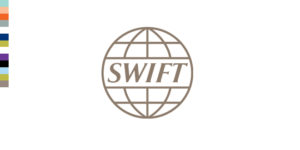• RMB accounted for 1.61% of all payments in December 2017
• CNY/USD remains the most important currency pair in value
• Digital usage on services such as SWIFT gpi sets the stage for improved growth
 Brussels/Dubai, 4 February 2018 – SWIFT’s latest RMB Tracker reveals a mixed year for the Chinese currency’s growth in 2017 and identifies some of the critical factors for success in 2018.
Brussels/Dubai, 4 February 2018 – SWIFT’s latest RMB Tracker reveals a mixed year for the Chinese currency’s growth in 2017 and identifies some of the critical factors for success in 2018.
Despite the growing importance of China in the global economy and the various strategic measures put in place to support its currency, SWIFT’s report shows that RMB usage accounted for 1.61% of domestic and cross-border payments in December 2017.
Hong Kong remains the largest RMB clearing centre with 76% activity share, while London remains the largest clearing centre outside of Greater China. However, its share of global RMB clearing activity decreased from 6.51% in 2016 to 5.59% in 2017.
The currency is, nevertheless, showing promising signs as it gains pace on digital platforms. Mobile services that expanded usage of the RMB, such as Alipay and WeChat Pay, as well as international initiatives such as SWIFT gpi, continued to grow rapidly throughout the year. Twenty-two Chinese banks have now adopted gpi, helping make RMB payments faster, more transparent and fully traceable.
In addition, the prominent role of the CNY/USD pair remained unchanged: 97.08 percent of RMB trading by value is against the USD and there is no substantial liquidity in any other RMB pair.
SWIFT’s RMB Tracker presents a monthly ranking and weighting of the RMB compared to other currencies worldwide. This special edition presents a broader analysis of usage in 2017 and initiatives, projects and trends impacting RMB internationalisation.
According to the report, some of the major trends impacting internationalisation in 2018, will include:
• The emergence of a cashless society mainly driven by digital giants Alipay and WeChat Pay;
• Expanded trade links between Asia, Africa and Europe through China’s Belt and Road Initiative;
• Continued globalisation of Chinese banks and their adoption of the SWIFT gpi service.
“The RMB has had a difficult year in 2017 and struggled to realise its potential for growth,” said Michael Moon, Head of payments Markets, APAC at SWIFT. “Experts suggest that capital controls and uncertainties over future regulations mean that a significant reversal of the decline in RMB usage for trade and payments is unlikely in 2018. However, there are promising programmes being put in place that could lead to growth over the longer term. Initiatives, such as SWIFT gpi strongly support RMB internationalisation as it is rapidly picking up pace in China. As of today, 22 Chinese banks have joined the initiative and China-US is the main corridor for payments on gpi, confirming the rapid pace of adoption. SWIFT gpi allows for payments to be settled in minutes around the world, ensuring China remains one of the world’s most attractive and economically competitive places to do business.”
Download a copy of SWIFT’s special edition RMB Tracker report here.
 Cash And Trade Magazine For Cash and Trade professionals in the Middle East
Cash And Trade Magazine For Cash and Trade professionals in the Middle East




